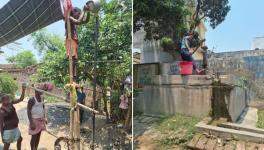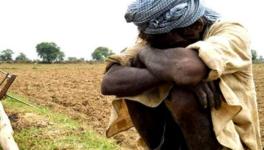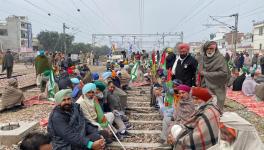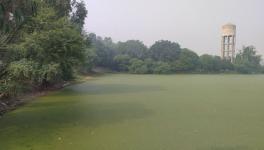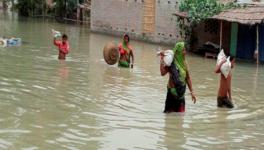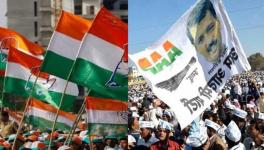Amid Flood Havoc, Punjabis Allege Government Negligence
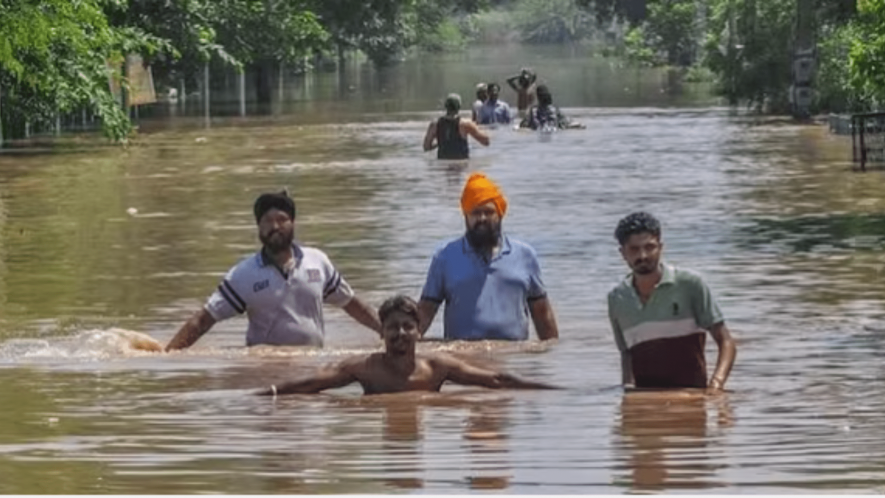
A flooded locality in Patiala, Punjab. Image Courtesy: PTI
Incessant rains since 8 July have spread havoc across Punjab. Around 1,500 villages in 19 of the state’s 23 districts are badly affected, where a steady stream of people require constant assistance. Many living in the affected areas have vacated their homes and moved to safer places. So far, more than 40 have died in these floods. There is no exact figure for damage to homes or livestock. Even the posh areas of the state are waterlogged. In many places, people vented their anger towards the administration. They say other locals or social and religious organisations are the only ones providing them with some assistance, while the ministers and MLAs of the government are just getting themselves photographed.
On the other hand, Punjab Chief Minister Bhagwant Mann has said that his government has been wholeheartedly engaged in helping people. Mann told the media on 23 July that the state has suffered an estimated loss of Rs 1,000 crore in these floods. He said a detailed report of the losses will be sent to the central government, and the state will demand a relief package.
The Punjab government has still not declared the state as “flood affected”. Punjab has received Rs 218 crore as aid released by the central government to flood-affected states, but due to not being officially declared as “flood-affected”, it has not received as much of this assistance as it could have. Until 25 July, the Punjab government was unable to get accurate ground reports of the damages caused in the flood-affected districts.
The urban areas of Punjab are as severely affected by the constant rainfall as the rural parts. For example, many parts of the Mohali district adjacent to Chandigarh have been badly damaged. The Gulmohar Colony in Dera Bassi, another satellite township of the capital city, is completely submerged in water. A home in the Kharar locality of Mohali completely collapsed due to the rainfall. Undoubtedly, more such instances will come to light in the coming days.
There was also a lot of damage due to the breakage or puncturing of dams or barriers built along the Ghaggar River in Punjab, Haryana and Rajasthan. These led to flood warnings being issued late last week in Punjab’s Sangrur district, and the river finally broke the Chandpura dam and drowned many villages in Mansa. Urban Estate, a posh area of Patiala city, has been badly affected by the floods. Here, people in villages and many social and religious organisations helped those stranded.
But this flooding and excess rainfall has caused the most damage to the agriculture of Punjab. Even here, the government is still ascertaining the exact losses to farmers. This is another reason for the delay in claiming “flood-affected” status, which is delaying the grant of additional central assistance to Punjab.
Many farmers of the Batala area in the Majha region have demanded help from the administration and have been grieving their losses. Balbir Singh, a farmer in the region, said, “Our crops have suffered extensive damage, and no fodder is left for our livestock. It is very difficult for us to overcome this situation without help from the government.”
Punjabi author Vijay Bambali, who has written several books on environment-related issues, says, “Like in the rest of the country, the non-scientific development model in Punjab is leading to environmental destruction. A nexus of government, land mafia and real-estate businessmen has erected buildings along the courses of rivers, blocking the natural channels of water. Illegal mining and the ineptitude of the governments in cleaning rivers, drains and drainage channels before the monsoons is another big factor. The blind Green Revolution race has also greatly harmed the environment.”
Indeed, the conditions of small farmers have worsened the most during these floods, especially the tenant farmers. Water has not only damaged their crops, but the debt burden on them will increase.
Sandeep Singh, a farmer in the Jalandhar district, says, “I had just started farming by taking 6 acres of land on contract and had taken a loan of Rs 2 lakh for it. I feel that my crop and my family’s dreams have been washed away in the water.” Agriculture has been badly affected in the border areas.
The flood has also brought diseases to the affected areas. Many cases of dysentery, cholera and malaria have started coming. The government claims it is serious about people’s health, and its teams are working. On the other hand, people are targeting the government.
Ramneek Singh of Patiala says, “Here, ordinary people are helping each other more than the government. Social organisations like Khalsa Aid, Shiromani Gurdwara Parbandhak Committee and other religious organisations are contributing. Our Muslim brothers of Malerkotla are actively engaged in helping the people.
Lakhveer Singh, a teacher from Sangrur district, says, “There has been a lot of damage to the education of children due to the floods. Not only the homes of poor people were broken, but their children’s books were also washed away. Many buildings of government schools have gone bad. The toilets meant for children and teachers are broken or have developed cracks in many places.” In Punjab, schools are closed till 29 July in the flood-affected areas.
The people and experts of the state hold the previous governments’ corrupt policies and the present government’s negligence responsible for this flood.
In the Ludhiana district, there have been damages in areas adjacent to the Sutlej River and Budha Nala. Cracks in the barriers of rivers have done a lot of damage, as has the overflowing of rivers from their channels. In Mohali, Rupnagar, Patiala, Fatehgarh Sahib, Ferozepur, Jalandhar, and Pathankot districts, Army and National Disaster Relief Force (NDRF) teams have led relief activities.
Areas adjacent to the Sutlej, Beas, Ravi and Ghaggar rivers are the worst affected in Punjab. Here, people were ferried on boats to safer places. The water of the Sutlej River has affected the Doaba region and its bordering area. The Ravi and Beas rivers have already caused plenty of damage in the border areas. The Kartarpur Corridor has been closed for over three days due to the floods as water from the Ravi flooded the Dera Baba Nanak area. The Ghaggar River wreaked havoc in the Malwa region. This river’s spilling over has also affected the Sangrur, Mansa, and Patiala districts.
In the Khanauri and Moonak areas of Sangrur, people themselves strengthened the Chandpura dam. The Sardulgarh area in Mansa was almost completely submerged due to the breach in the Ghaggar River. On the other hand, seven villages in the Gurdaspur district bordering Pakistan have lost contact with the country and the outside world.
The author is an independent journalist. The views are personal.
Get the latest reports & analysis with people's perspective on Protests, movements & deep analytical videos, discussions of the current affairs in your Telegram app. Subscribe to NewsClick's Telegram channel & get Real-Time updates on stories, as they get published on our website.










